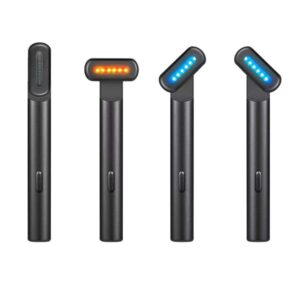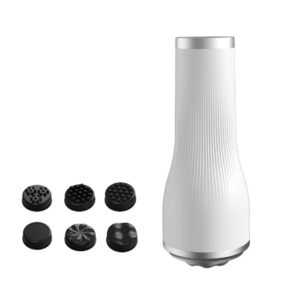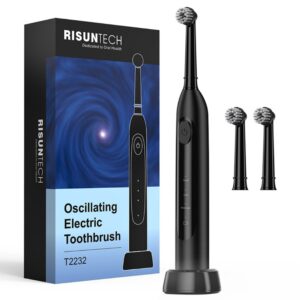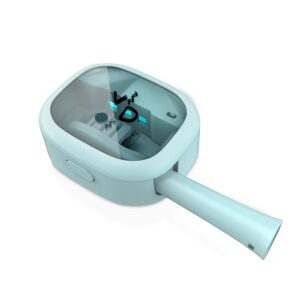Summary
A sonic electric toothbrush is a type of powered toothbrush that utilizes high-frequency vibrations to enhance oral hygiene by effectively removing plaque and debris from teeth and gums. Distinct from traditional manual and other electric toothbrushes, sonic toothbrushes can produce oscillations at frequencies typically ranging from 20,000 to 45,000 strokes per minute, significantly increasing their cleaning efficacy. This advanced technology has garnered considerable attention within the dental community and among consumers, particularly due to research demonstrating superior plaque control compared to manual brushing methods.
The popularity of sonic electric toothbrushes has surged since the late 1990s, propelled by a growing body of clinical evidence that supports their effectiveness. Studies indicate that users of sonic toothbrushes experience a marked reduction in plaque levels—averaging an 11% reduction after one to three months of use—and improved gum health over time. Additionally, features such as built-in timers, pressure sensors, and Bluetooth connectivity have transformed them into multifunctional tools that encourage proper brushing techniques and personalized oral care.
Despite their benefits, sonic electric toothbrushes have sparked some controversy regarding their cost and necessity, with skeptics questioning whether their advanced features justify the higher price point compared to manual brushes. While the initial investment may be significant, many users report long-term savings on dental care due to improved oral health outcomes, which may lead to reduced need for professional treatments. Moreover, there are misconceptions about their usage, including the belief that simply owning such a toothbrush guarantees effective cleaning, emphasizing the importance of proper technique in achieving optimal results.
In conclusion, sonic electric toothbrushes represent a significant innovation in dental care, combining advanced technology with a focus on user engagement and education. Their effectiveness in promoting oral health has made them a popular choice among consumers, although potential users should consider their individual needs and preferences when selecting a dental hygiene tool.
Table of Contents
History
The evolution of toothbrushes, particularly electric models, reflects a significant shift in oral care technology aimed at enhancing dental hygiene. The first generation of electric toothbrushes emerged in the 1960s and 1970s but gained limited traction beyond special needs and orthodontic populations due to insufficient evidence demonstrating their effectiveness over traditional manual brushes. It was not until the late 1980s and early 1990s that more advanced models, including sonic toothbrushes, began to enter the market.
In 1998, during the European Workshop on Mechanical Plaque Control, significant research was presented that concluded electric toothbrushes, including sonic models, offered superior plaque control compared to manual brushes. This finding catalyzed the growth of the electric toothbrush market, as consumers began to recognize the benefits of these devices. Over the years, improvements in technology, including the incorporation of features such as pressure sensors, Bluetooth connectivity, and artificial intelligence, have further transformed electric toothbrushes into sophisticated tools for oral hygiene.
The global electric toothbrush market has witnessed remarkable growth, projected to reach $6.82 billion by 2030, with a compound annual growth rate (CAGR) of 7.8% from 2025. This growth reflects a broader trend toward preventive care, with consumers increasingly seeking tools that promise long-term oral health benefits. In particular, the surge of interest in sonic technology, driven by innovations in design and functionality, has reshaped consumer preferences, leading to a robust market for high-performance sonic toothbrushes.
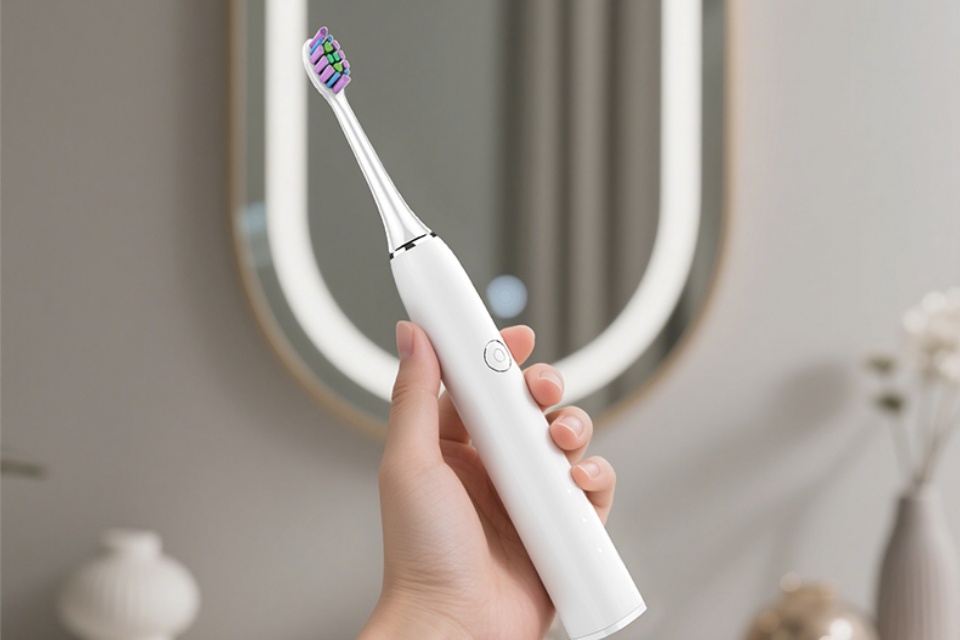
Mechanism of Action
Sonic electric toothbrushes employ advanced technology to enhance oral hygiene by utilizing two primary methods of action: mechanical cleaning and hydrodynamic/acoustic vibration.
Mechanical Cleaning
The mechanical cleaning action of sonic toothbrushes involves high-frequency vibrations produced by the filaments within the brush head. These vibrations typically range from 260 to 500 Hz, allowing the bristles to perform oscillations at an astonishing rate of 16,000 to 45,000 strokes per minute. This action effectively dislodges food particles, biofilm, and plaque from the surface of the teeth, outperforming manual toothbrushes, which achieve a maximum of 300 strokes per minute.
Hydrodynamic and Acoustic Vibration
In addition to mechanical cleaning, sonic toothbrushes harness hydrodynamic and acoustic vibrations to create a dynamic fluid motion. This unique feature helps to disrupt plaque and bacteria beyond the immediate reach of the bristles, extending the cleaning effect to areas between the teeth and along the gum line. Standard electric toothbrushes usually operate with lower frequencies (200-400 Hz) and focus primarily on rotational movements, but sonic technology employs lower amplitude, high-frequency vibrations starting at 20,000 strokes per minute. The resultant increase in saliva production not only aids in cleaning but also enhances the overall effectiveness of the brushing process.
Research indicates that sonic toothbrushes are generally more effective in plaque removal compared to their electric counterparts, primarily due to their superior dynamic cleaning action. Furthermore, the design of sonic toothbrushes often includes features such as built-in timers to help users maintain proper brushing duration as recommended by dental professionals.
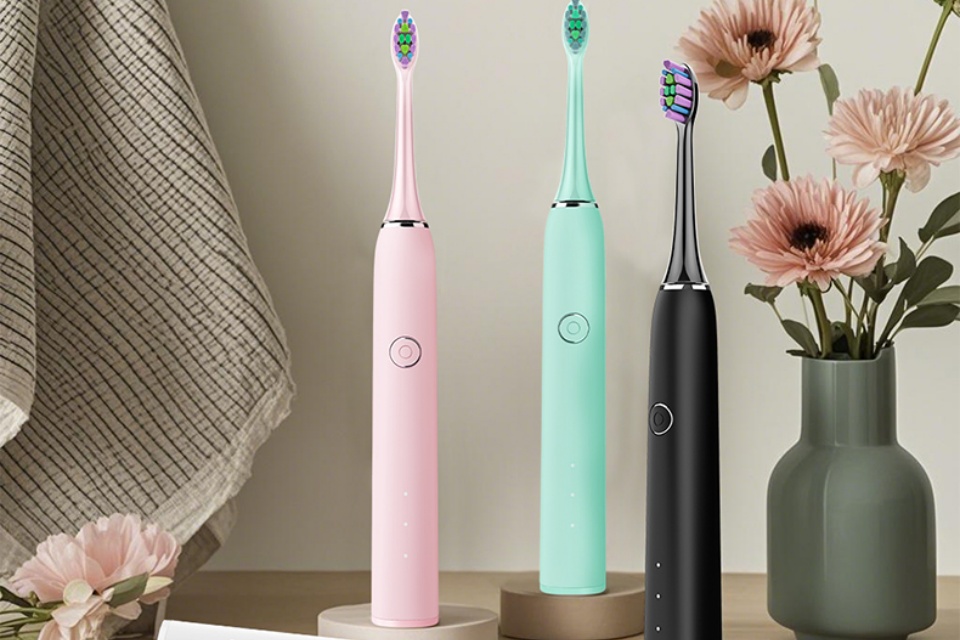
Benefits
Sonic electric toothbrushes offer a range of benefits that contribute significantly to improved oral health and hygiene. These advantages make them a compelling choice for individuals seeking to enhance their dental care routine.
Superior Cleaning Performance
One of the most notable benefits of sonic electric toothbrushes is their superior plaque removal capability. Research indicates that a powered toothbrush can lead to an average reduction of 11% in plaque after one to three months of use, and a remarkable 21% reduction after three months. This enhanced cleaning ability is attributed to the sonic technology that allows for more effective agitation and disruption of plaque compared to manual brushing.
Long-Term Investment in Oral Health
Although the initial investment in a high-quality sonic toothbrush, such as the Philips DiamondClean, may seem significant, it can lead to substantial long-term savings. By maintaining cleaner, healthier teeth and gums, users can reduce their need for dental work, ultimately lowering overall dental expenses. Additionally, the durability of these toothbrushes means they can last for several years, enhancing their cost-effectiveness over time.
Child-Friendly Options
Sonic electric toothbrushes are also designed with children in mind. For example, the Philips Sonicare for Kids features a fun mobile app that gamifies the brushing experience. Children can engage with an interactive character, Sparkly, who guides them through a teeth simulation while brushing. This approach not only makes brushing enjoyable but also allows parents to track their children’s brushing habits and ensure they are learning the proper techniques.
Versatile Choices for Different Needs
The market for sonic electric toothbrushes offers various models tailored to diverse user needs. This ensures that individuals can find a toothbrush that fits seamlessly into their daily routine while supporting their specific dental health goals. Whether one prefers a toothbrush with advanced technology or a simpler model, there are options available to suit all preferences.
Enhanced Engagement Through Technology
Modern sonic electric toothbrushes often incorporate Bluetooth technology, allowing users to monitor their brushing habits through an accompanying app. This feature provides valuable feedback on brushing techniques, including areas missed and brushing duration, fostering a more mindful and effective oral hygiene routine.
Comparison to Manual and Other Electric Toothbrushes
When comparing sonic electric toothbrushes to manual and other types of electric toothbrushes, several factors come into play, including cleaning efficacy, user experience, and cost considerations.
Cost Considerations
One notable disadvantage of sonic electric toothbrushes compared to manual brushes is the initial cost, which tends to be significantly higher. Furthermore, ongoing maintenance expenses, such as replacing brush heads, can accumulate over time. Despite these costs, many users find the advanced features and enhanced cleaning capabilities of sonic brushes justify the investment, particularly for those with specific dental concerns.
Advantages of Sonic Electric Toothbrushes
Sonic electric toothbrushes leverage high-frequency vibrations to create a fluid dynamic that enhances plaque removal beyond the mechanical action of manual brushes. Research indicates that these brushes can stimulate blood flow and promote healthy gum tissue growth more effectively than manual brushing alone, leading to improved oral health outcomes. Additionally, many sonic models incorporate features such as timers, pressure sensors, and multiple brushing modes, which further assist users in maintaining proper brushing techniques and ensuring a comprehensive clean.
Comparison with Manual Toothbrushes
While manual toothbrushes are more affordable and do not require batteries or charging, their effectiveness largely depends on the user’s technique. They may not provide the same level of plaque control as sonic electric brushes, which deliver consistent and precise cleaning motions. Moreover, individuals with limited manual dexterity, such as children or the elderly, often benefit from the ease of use and efficiency offered by sonic models, making them a valuable tool for improving oral hygiene in these demographics.
Comparison with Other Electric Toothbrushes
Sonic toothbrushes differ from other electric types, such as oscillating-rotating brushes, in their cleaning mechanism. Oscillating brushes, popularized by brands like Oral-B, rotate and pulsate to remove plaque. Studies show that both sonic and oscillating-rotating toothbrushes can outperform manual brushes in plaque removal and reducing gum disease. However, user preference may vary, as some individuals may find the vibrating action of sonic toothbrushes more comfortable and less noisy than the oscillating movement.
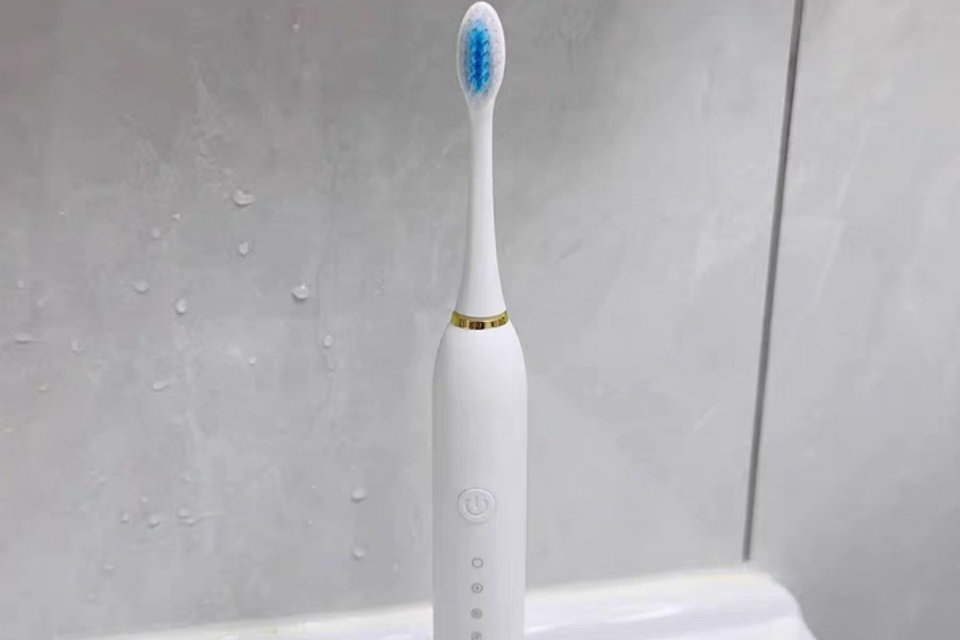
Environmental Sustainability
Sonic electric toothbrushes are increasingly being recognized for their potential environmental benefits, particularly in the context of a growing consumer demand for sustainable products. As the market evolves, several brands are introducing innovations aimed at reducing environmental impact. For instance, Oracura is noted for its commitment to sustainable practices, which includes the development of biodegradable brush heads and solar-powered chargers. This aligns well with India’s sustainability goals, where the future of sonic toothbrushes is anticipated to thrive due to falling prices and increased consumer education.
Many sonic toothbrushes are designed with eco-friendliness in mind. Quip’s Plastic Sonic Toothbrush, for example, features replaceable brush heads that minimize waste, allowing users to retain the handle and only replace the head every three months. This design choice not only cuts down on plastic waste but also incorporates recyclable paper packaging to further lessen environmental impact. Quip’s toothbrushes also offer a 100% recyclable plastic tube for its toothpaste, highlighting a holistic approach to sustainability.
The advantages of manual toothbrushes, particularly those made from biodegradable materials, are also worth noting. These toothbrushes do not require electricity or batteries and often result in less waste, especially when they come with replaceable heads or are crafted from sustainable materials. Additionally, their lightweight and compact nature make them an excellent choice for travel, contributing to their eco-friendly appeal.
In a world increasingly focused on reducing waste and promoting sustainability, sonic toothbrushes represent a forward-thinking solution that balances effective dental care with environmental responsibility. As consumers become more conscious of their choices, products that prioritize both health and sustainability are likely to gain traction, solidifying the role of sonic toothbrushes in the future of oral care.
Popular Brands and Models
The market for sonic electric toothbrushes has seen significant growth, with several brands leading the charge in innovation and effectiveness. Among these, notable brands include Oracura and Oral-B, both of which offer models tailored to diverse consumer needs.
Oracura
Oracura has established itself as a prominent player in the Indian market, particularly focusing on high-performance sonic toothbrushes designed for urban consumers. The brand’s commitment to enhancing oral health is reflected in its innovative designs, such as app-integrated toothbrushes that provide real-time feedback for improved brushing techniques. Users have reported benefits like reduced gum issues and lower plaque levels after using Oracura models, making them a favored choice among health-conscious consumers.
Oral-B
Oral-B’s Pro 3 3000 Series is frequently cited as one of the best toothbrushes for those suffering from gum recession. This model includes features such as a pressure sensor that alerts users when they are brushing too hard, as well as multiple modes including a sensitive mode ideal for sore gums. With its small head design, the Pro 3 allows users to effectively clean hard-to-reach areas, and its built-in timer ensures that brushing lasts the recommended duration of two minutes.
Market Trends
The electric toothbrush market, particularly the sonic segment, is projected to expand significantly in the coming years. In North America, the market is expected to grow from $869.4 million in 2024 to approximately $1.38 billion by 2034, while the Asia-Pacific region, especially India, is anticipated to grow at an impressive CAGR of 10% over the same period. This growth is driven by rising affluence and increasing consumer awareness about the benefits of advanced oral care technologies.
Maintenance and Care
Proper maintenance of a sonic electric toothbrush is essential for ensuring optimal performance and longevity. Regular care begins with cleaning the brush head after each use. Users should rinse away toothpaste residue and debris to prevent buildup that can compromise the brush’s effectiveness. Additionally, it is important to keep the handle and charging base free of dirt and moisture, as these components contribute to the overall functionality of the device.
Brush Head Replacement
To maintain the effectiveness of a sonic toothbrush, it is crucial to replace the brush head every three months or sooner if the bristles appear worn out. Over time, bristles can become frayed, losing their cleaning efficiency and potentially harboring bacteria. Regular replacement ensures that the toothbrush provides optimal performance and maintains hygiene standards.
Cleaning and Storage
After each use, users should thoroughly clean their sonic toothbrush. This involves rinsing the brush head under running water and shaking off excess moisture. Storing the toothbrush upright in an open area allows it to air dry, which helps prevent the growth of bacteria. Routine cleaning of the handle and charging base is also important to keep the entire unit free from buildup and in good working condition.
Complementary Oral Hygiene Practices
For the best oral hygiene, combining the use of a sonic toothbrush with flossing and mouthwash is recommended. Flossing removes plaque and food particles from between the teeth where brush bristles can’t reach, while mouthwash can help kill bacteria and freshen breath. This comprehensive approach ensures a cleaner mouth and helps to prevent dental problems such as cavities and gum disease.
Maintenance for Extended Battery Life
Many modern sonic toothbrushes feature impressive battery life, often lasting several weeks on a single charge. To optimize battery efficiency, users should take advantage of innovative power-saving modes, which automatically turn off the device when not in use. This feature not only conserves energy but also extends the battery’s overall lifespan, ensuring the toothbrush remains effective over an extended period.
Misconceptions and Limitations
While sonic electric toothbrushes are widely praised for their effectiveness in plaque removal and overall oral health, several misconceptions and limitations exist regarding their use and benefits.
Misconceptions
One prevalent misconception is that all electric toothbrushes operate equally well in removing plaque. In reality, the efficacy of plaque removal can vary significantly between different types of electric toothbrushes. Sonic toothbrushes, which utilize rapid vibrations to disrupt plaque biofilm and enhance cleaning, often outperform traditional oscillating or rotating brushes in this regard. Furthermore, many users mistakenly believe that simply owning a sonic toothbrush guarantees optimal oral hygiene. Effective use, which includes proper technique and adherence to recommended brushing times, is crucial for achieving the desired outcomes.
Another common misunderstanding is that the benefits of sonic toothbrushes are primarily due to their advanced technology. While the technology plays a role, the effectiveness of brushing is largely influenced by the user’s technique. Studies have shown that even with instruction, many individuals revert to ineffective brushing patterns, regardless of whether they are using a manual or powered toothbrush. Therefore, users must be educated on proper brushing methods to maximize the potential benefits of sonic toothbrushes.
Limitations
Despite their advantages, sonic toothbrushes also have limitations. For instance, improper use can lead to enamel wear or gum irritation due to excessive pressure applied during brushing. It is essential for users to follow best practices, such as holding the brush at a 45-degree angle and using gentle pressure, to avoid damage while still ensuring effective plaque removal. Additionally, not all sonic toothbrushes are suitable for every individual. Users with sensitive teeth or gum conditions should opt for models that feature adjustable intensity settings or gentler sonic technology to minimize discomfort.
Moreover, while sonic toothbrushes are effective at plaque removal, they may not always provide the comprehensive care needed for individuals with specific dental issues. Regular dental check-ups and professional cleanings are essential to address concerns that a toothbrush alone cannot resolve. In conclusion, while sonic electric toothbrushes are beneficial tools for maintaining oral hygiene, their effectiveness hinges on proper usage and individual needs, and misconceptions about their capabilities should be addressed to enhance user experience and outcomes.



